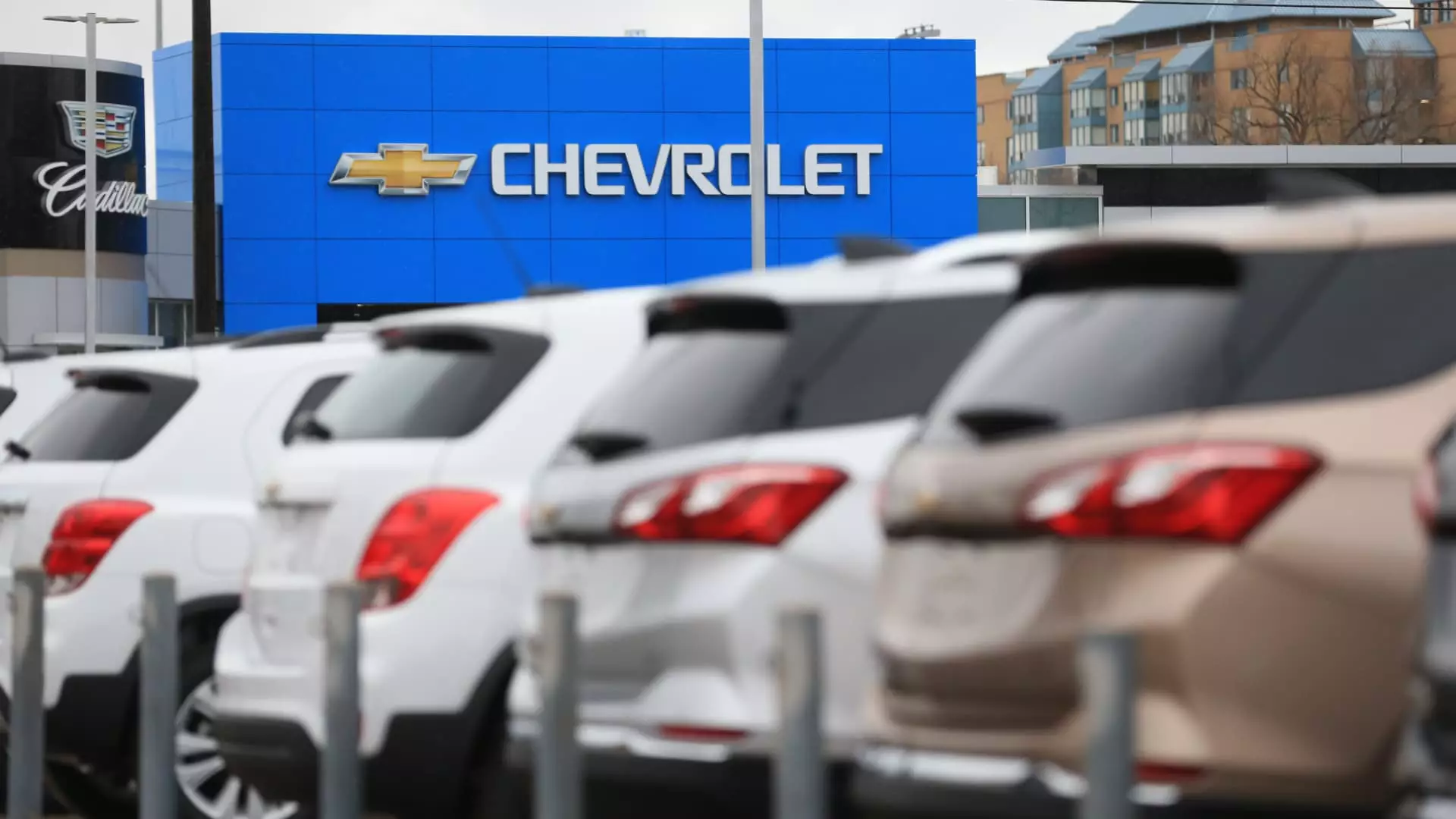Recent reports of the automotive industry’s first-quarter sales surge yield a striking juxtaposition against the backdrop of impending tariffs imposed by President Donald Trump. With General Motors (GM) announcing a remarkable 16.7% increase in U.S. vehicle sales compared to the previous year, one cannot help but marvel at how such an escalation stands in the face of economic uncertainty. Analysts, who initially suggested a mere 1% year-over-year growth, now find themselves grappling with a reality that defies their predictions, revealing that consumers are piloting the industry through turbulent waters—not because of optimism, but rather out of fear of escalating costs due to new tariffs.
The Shift Towards Electric Excellence
It’s noteworthy that GM’s success is bolstered by the burgeoning market for all-electric vehicles, illustrated by sales boosts for models like the Cadillac Escalade IQ and Cadilliac Optiq. This trend not only positions GM as a frontrunner in the electric vehicle (EV) segment but also reflects a broader consumer shift towards sustainability and cleanliness in automotive choices. Yet, amidst these advances, one must question the sustainability of such growth. Is this burgeoning eagerness to purchase merely a preemptive action against looming price hikes, or does it denote a true embrace of automotive innovation?
Ford’s Frustration: A Cautionary Tale
While sales figures are booming for GM and others, Ford’s performance tells a different story, with a decline of 1.3% largely attributable to their strategy of discontinuing the Ford Edge SUV. Ironically, Ford’s decision to halt production is independent of the imminent tariffs, suggesting a disconnect between strategic planning and market realities. Despite experiencing a surge in retail sales, Ford’s overall performance serves as a warning: a reliance on traditional models can result in vulnerability, especially when consumer preferences are quickly evolving. If Ford hesitates to fully embrace this transformative era, they risk being left behind in a changing landscape.
The Consumer’s Dilemma: Purchase Now or Regret Later?
Amidst the turmoil of potential tariffs, an interesting dynamic has emerged—consumers acting on impulse, racing to dealerships to secure vehicle purchases before their budgets are compromised by potential price hikes. J.D. Power’s assertion that retail sales surged by 13% in March can be viewed through the lens of the impending tariff situation as both an opportunity and a gamble. It underscores a crucial choice that consumers currently face: is their desire for new vehicles stemming from genuine need, or is it a reaction to the anxiety of future costs?
The Ominous Future of the Tariff Strategy
With auto tariffs set to take effect, the unpredictability of these measures casts a long shadow across the entire automotive landscape. While some manufacturers like Hyundai and Honda report gains of 10% and 5.3%, the overarching question lingers: will the strategy of implementing tariffs backfire, ultimately constricting the market rather than invigorating it? It’s crucial to understand that these tariffs are not merely economic instruments but political tools that can drive consumers either towards resilience or resentment. The ramifications of this tightly-woven situation will undoubtedly ripple throughout the industry, compelling it to adapt at a breakneck pace.
Ultimately, the first quarter’s results serve as both a beacon of hope and a harbinger of uncertainty. The clash between progress and protectionism sets the stage for a new chapter in the automotive saga.

